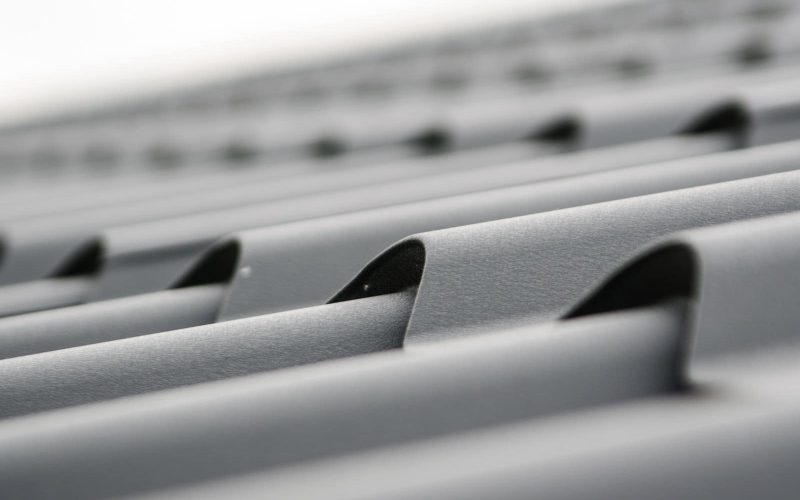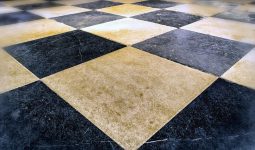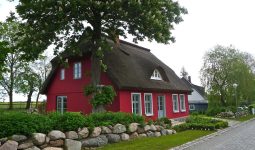As simple as a flat roof may seem, some variations bring about this article on the types of flat roofing available. Flat roofs are the most cost-effective roofing option.
They provide excellent weather protection for your home or commercial property while keeping the interior dry and toasty. Flat roofs have many advantages, but they also have some drawbacks.
Flat roofs are common on all structures; we’re all familiar with them. However, is a flat roof the best option for your structure?
Flat roofs differ from the more ornamental sloped roofs found on homes and small buildings, but they offer several benefits in certain scenarios and could be the best option for a new structure.
Various types of flat roofing materials are available to satisfy the needs of building owners and managers when a flat roof is the best option or when replacing an old flat roof.
Flat roofs offer several benefits, making them the best option for certain structures. They are great for larger structures that require constant activity on the rooftop since they are lighter, less expensive to install, and provide simple access.
One thing to remember is that flat roofs aren’t entirely flat. They usually are slightly slanted to allow water to flow away.
Even so, because drainage is slower on a flat roof than on a higher slope, most flat roofs must be maintained regularly to ensure that the roof material is kept watertight and sealed to prevent leaks and damage to the building below.
Flat roofs should be inspected yearly to search for faults and seal surfaces harmed by UV radiation or dampness.
Without much Ado, let’s move to the different types of flat roofing.
1. Thermoplastic Membrane Flat Roof
A single-ply layer of material is fastened to the roof with screws and plates in this form of roofing. It is typically white or gray, although it can also be other hues.
Their high-temperature endurance and durability are lauded. Thermoplastic membrane roofing comes in two varieties: polyvinyl chloride (PVC) and thermoplastic olefin (TPO).
PVC is the third most often used synthetic material. Because of its flexibility, roofing is quite simple to install. It is also the more durable of the two thermoplastic membrane roofing types. They can endure up to 20 years in most cases.
Furthermore, TPO is a more environmentally friendly version of the thermoplastic membrane roof. When it’s time to replace the sheets, You can recycle the old material.
Two advantages of this roofing material are its UV absorption and flame resistance. TPO roofing has a lifespan of 15 to 20 years.
Thermoplastic membrane roofing is still popular because of its low cost, energy efficiency, and durability. This is one of the different types of flat roofing.
2. Build Up Roof (BUR)
Build-up roofs have been a fixture in flat roofing for almost a century. Their rough tar and gravel appearance makes them simple to spot.
The installer will build it until a dense layer of minerals and tar is packed on the roofing (thus the name).
This is a popular choice because of its low maintenance requirements and affordable price. It is also effective against UV radiation. They can endure up to 15 to 20 years if properly maintained.
However, there are a few drawbacks. Also, it doesn’t hold up well in bad weather, and it’s tough to track down the cause of a leak once it happens. It’s also relatively hefty and inefficient in terms of energy.
3. Rubber Membrane Flat Roof
This roofing material uses a single-ply rubber membrane, which is either cemented down or fastened down with rocks.
The rubber will be secured with boulders, making it a built-up roof. The membrane will be held down by much larger stones rather than gravel.
EPDM roofing is available in two colors: black and white. It is the most cost-effective roofing choice for both installation and repair. Installation is usually quick and straightforward.
Rubber roofing typically lasts 25 to 30 years. In addition, the white option is preferable if you live in a cold region because dark roofing material can absorb heat and increase your cooling bills.
4. Modified Bitumen Flat Roof
A modified bitumen roof is an asphalt-based sheet with a texture and appearance similar to the BUR. It starts with insulation and is laid in five layers.
However, the modified base sheet, bitumen membrane, adhesive, and surface topcoat are applied.
A modified bitumen roof is a time-consuming and labor-intensive technique. A professional should always do it.
However, Hot-mopping, cold-pressing, or self-adhering materials to the roof surface are possible installation methods. Even if the installation is complicated, the results are worth it.
Also, Modified bitumen roofs are incredibly long-lasting, lasting up to 20 years, and are simple to maintain. This is one of the different types of flat roofing.
5. Spray-On Flat Roof
As the name implies, this roofing alternative is sprayed directly onto the roof. To begin the installation, a high-density polyurethane foam base layer is placed with a wand or sprayer.
Following that, the contractor will apply a waterproof elastomeric coating. It’ll usually be white or gray. The entire procedure is designed to be rapid and effortless.
Furthermore, spray-on roofs are expensive, but for a good cause. Also, due to the lack of seams, it can easily conform to any roof shape and provides an almost fully waterproof finish. In addition, this roofing can endure up to 40 years if correctly placed.
6. Metal Flat Roof
Another typical flat roof material is metal. Because of its malleability, aluminum is usually the selected material.
Other metals, like tin, copper, steel, or zinc, are also options. Using screws or other fasteners, your contractor will adhere huge metal sheets to the roof’s surface.
Dry, warm regions are ideal for this type of roof. However, they can last up to 35 years under these optimal conditions. The metal sheeting reflects heat and wicks moisture away effectively.
Also, if you pick metal roofing in a rainy area, you risk corrosion difficulties because flat roofs don’t have much drainage.
7. Green Flat Roof System
Environmentally friendly options are all the rage, especially in the roofing industry! Living plants are used to create green roofs.
This innovative, up-and-coming solution has an attractive appearance and a cheaper energy bill. They may even absorb contaminants from the air!
To install this type of roof, ensure it has at least a 14-inch pitch per foot of run and is structurally solid. Also, a rubber or plastic base material and insulation must be beneath your green roof.
Once you’ve determined that your rooftop is suitable for growing plants, you may use planting trays or create a “landscape” directly on the roofing material.
8. Concrete Flat Roof
Contrary to popular belief, concrete roofs consist of several layers. A screed layer is applied first on the concrete slab, followed by a vapor barrier.
The insulation is then coated with a polyethylene covering. A contractor can begin installing the self-compacting concrete roofing material only after all of this has been completed.
Concrete is a tried-and-true flat roofing material. It is weather-resistant and relatively simple to maintain. Furthermore, in optimal conditions, it can last up to 50 years.
However, because of the porous nature of concrete, this sort of roof might leak. This is one of the different types of flat roofing.
9. Spray Polyurethane Foam Roof
A wand or sprayer is used to apply a coating of high-density polyurethane foam to a spray foam roof.
After that, the foam is sprayed with a waterproofing elastomeric top layer. The hue of this top coat is usually reflecting gray or white.








